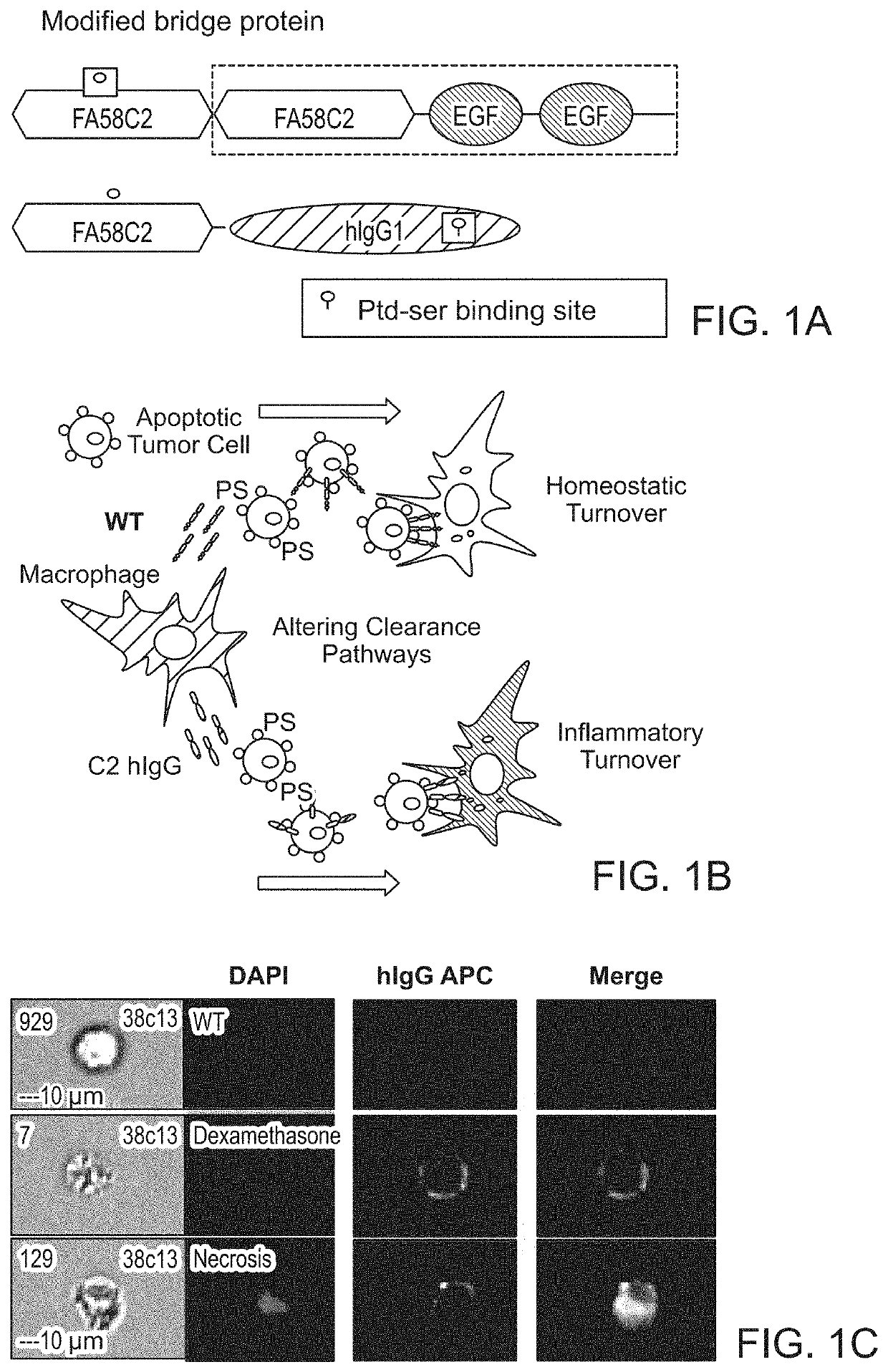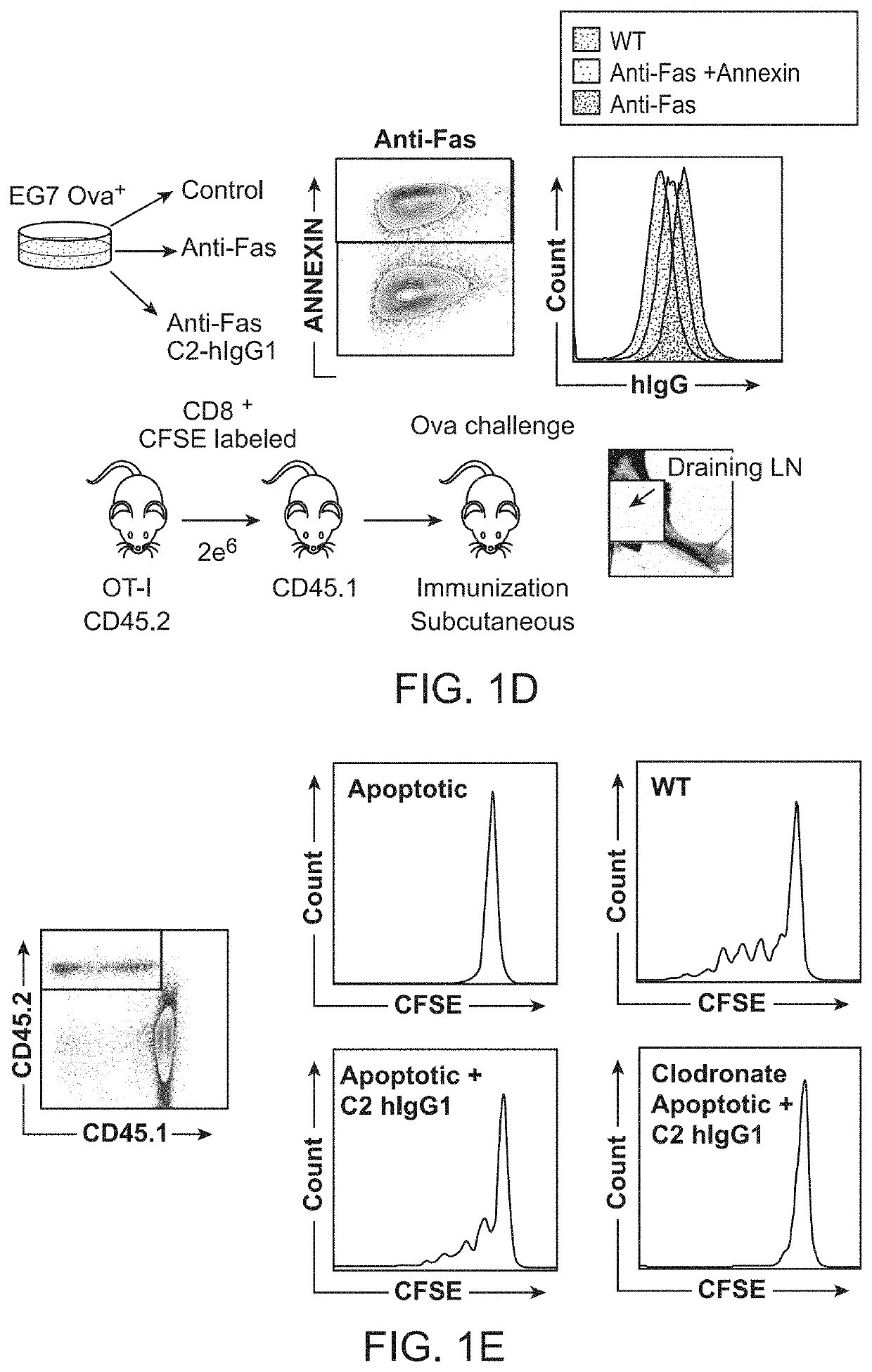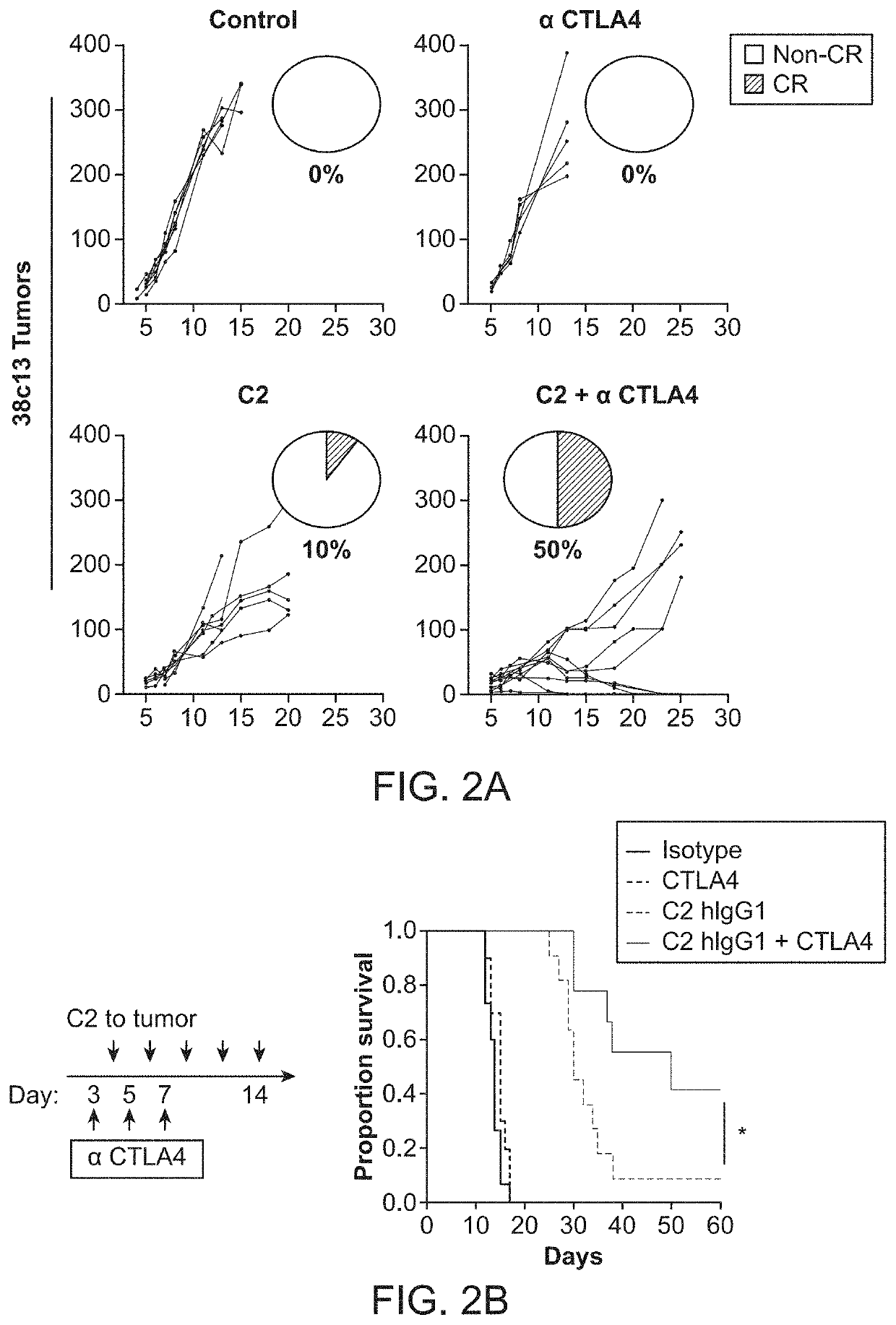Methods for enhancing immune responsiveness in an individual toward a target cancer cell population comprising apoptotic cells
a cancer cell population and immune responsiveness technology, applied in the direction of peptides, peptide/protein ingredients, peptide sources, etc., can solve the problems of limiting the immunogenicity of apoptotic cells and obstacles to establishing immunity to tumors, so as to promote inflammatory turnover of apoptotic cells, block homeostatic elimination of cells, and enhance immunogenicity
- Summary
- Abstract
- Description
- Claims
- Application Information
AI Technical Summary
Benefits of technology
Problems solved by technology
Method used
Image
Examples
example 1
Super Cross-Presentation of Tumor Antigens by Synthetic Design of an Anti-Phosphatidylserine Bridge Protein
[0136]Phosphatidylserine (PS) is a crucial regulatory factor within the tumor microenvironment. Translocation of PS to the outer leaflet of the plasma membrane can rapidly increase under pathophysiological conditions, triggering engulfment and preventing secondary necrosis and inflammation in the surrounding tissue. These protective effects have been shown to shield bystander cells and tissues from excessive immune-mediated damage—a process that that has been associated with the generation of an immunosuppressed tumor niche.
[0137]We first sought to examine the capacity of antigen presenting cells (APCs) to cross present dead cell-associated antigens. In these studies, we utilized the OT-I transgenic T cell receptor (TCR) mouse system to measure proliferative CD8+ T cell responses in draining lymph nodes (dLNs) of mice after subcutaneous injection of apoptotic EG7-OVA cells (a T...
PUM
| Property | Measurement | Unit |
|---|---|---|
| dissociation constant | aaaaa | aaaaa |
| dissociation constant | aaaaa | aaaaa |
| dissociation constant | aaaaa | aaaaa |
Abstract
Description
Claims
Application Information
 Login to View More
Login to View More - R&D
- Intellectual Property
- Life Sciences
- Materials
- Tech Scout
- Unparalleled Data Quality
- Higher Quality Content
- 60% Fewer Hallucinations
Browse by: Latest US Patents, China's latest patents, Technical Efficacy Thesaurus, Application Domain, Technology Topic, Popular Technical Reports.
© 2025 PatSnap. All rights reserved.Legal|Privacy policy|Modern Slavery Act Transparency Statement|Sitemap|About US| Contact US: help@patsnap.com



